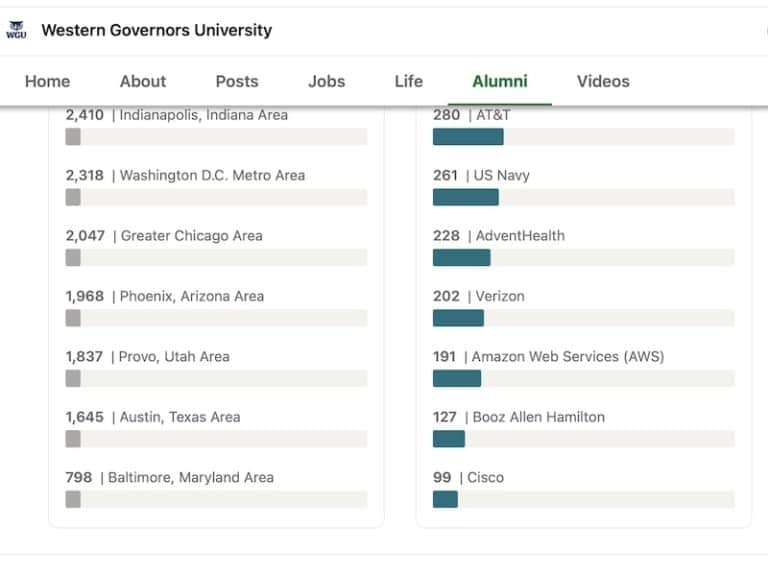Easy Guide to Switching From Online to In-Person College
Estimates say that 75% of undergraduate students take at least one online class.
On the flip side, some online students want to go from logging into virtual classes to attending in-person classes to enjoy the full traditional college experience and benefits, from extracurricular participation to networking opportunities.
However, turning into in-person students poses many challenges for many adult learners.
There are various things to consider before making the switch, which, if overlooked, can make attending a physical campus a terrifying and impossible undertaking.
Research and Have a Feel of the Physical College
Applying to a traditional college as an online student is just like applying to college as a high schooler.
It involves the same steps a high school teen would take.
Researching the college is of utmost importance — everything from its campus type to the cost of attendance can impact your success rate in traditionally earning a degree.
Visit the Campus in Person
Taking a campus tour is one of the things you may do to determine if the institution offers the best fit — while a virtual tour is okay, an in-person visit is better for the transition process.
Soon, you will have your classes in a physical classroom.
Therefore, it’s a must to observe what a typical class is like at your prospective brick-and-mortar school.
If the school administration allows, sitting in on an ongoing class is a great idea — it will let you experience firsthand what it’s like being a traditional college student.
Ask the students about their experience.
Meet with professors who teach courses in the major you’re interested in.
During your campus visit, remember to check out various facilities such as the following:
- Residence halls
- Dining area
- Library
- Bookstore
- Student center
Check for Signs of Non-Traditional Student Friendliness
Because you are not a fresh high school graduate or likely to keep your current job, attending an in-person college won’t turn you from a non-traditional student to a traditional student.
You will still fall under the non-traditional student category by definition.
Unfortunately, not all traditional colleges are ideal for non-traditional students.
It’s a must to check whether or not class schedules are flexible or whether or not you must take a minimum number of credits per semester before you fill out that application form.
Look for some telltale signs that the physical college is welcoming to non-traditional students like you.
For instance, Rutgers University has an Office of Transfer and Non-Traditional Students (OTNTS) that supports transferees and adult learners through direct outreach and facilitation to access to various resources.
On the other hand, the University of Oregon has programs for non-traditional students on campus.
Inquire About Transferable Credit Policy
When transferring from an online to a traditional college, check that you can maximize the number of transferrable credits to avoid flushing time and money down the drain.
It’s not always that earned credits will transfer with you.
More importantly, it’s not always that a brick-and-mortar college will accept online credits.
Transferring from the online campus to the physical campus of the same postsecondary institution should be easy because they share the same admissions policy and, most of the time, academic curriculum.
However, things are different when switching between two entirely different schools.
First Things First: Check for Accreditation
Before anything else, make sure that your online school is accredited.
No recognized accreditation means no credit will transfer to a conventional college — the physical institution may even require you to apply as a first-time, first-year student rather than a transferee.
Often, transferring credits is seamless between two regionally accredited institutions.
Credits earned from a nationally accredited online school — as most online schools with no physical campuses are — are unlikely to transfer to a college with regional accreditation.
Transfer Limit and Residency Requirement: They Go Hand in Hand
As far as college credits go, there are two critical things you must check when switching from being an online student to a student attending a campus-based institution.
Firstly, credit transfer limits.
Many colleges and universities accept only as many transfer credits.
So, in other words, they enforce a ceiling on how many credits transfer students can bring with them from their previous schools — it doesn’t matter whether those are virtual or physical.
According to the National Student Clearinghouse, transfer students lose 13 credits, on average.
That’s equivalent to about four classes you lost and must take at the on-site college.
Therefore, you should consider sending an application to a traditional college that’s more friendly and accommodating to transferees and the credits they wish to transfer with them.
Secondly, there’s the residency requirement.
Many colleges require transfer students to earn a minimum number of credits while attending them to meet graduation requirements and earn their bachelor’s degrees.
Of course, it’s one of the reasons why, usually, how many credits you can transfer has a limit.
Looking into a school’s residency requirement is vital.
That’s because it can determine how much money you have to shell out as a student from an online college and how much time you need to spend as a face-to-face college student.
Look for Flexible Class Schedules
According to a joint study by Learning House, Aslanian Market Research, and Wiley Education Services, approximately 72% of online students at the undergraduate level have jobs.
Some are working full-time, while others are working part-time.
Either way, being employed is one of the main reasons why many students who wish to earn a bachelor’s degree attend an online institution rather than a physical college.
Meanwhile, a recent survey says that up to 95% of online students are taking care of kids below 18!
Can’t Go to School Daily? Take Night and Weekend Classes
Whether you have a job or a child, attending a traditional college won’t make you a traditional student.
You still fall under the non-traditional student category even after transitioning from an online school to a physical college or university successfully, by definition.
Because of this, you should obtain a schedule suitable for the kind of learner you are.
Night classes are suited for most employed non-traditional students — they help them tend to their jobs during usual office hours and hit the books during the nighttime.
Many colleges and universities in urban areas have night classes.
Offering them allows students employed full-time to keep both their jobs and studies.
A lot of community colleges have night classes, too, although it’s not uncommon for the availability of classes held at night to be limited — employed students may have to enroll early to obtain a slot.
Weekend classes are wonderful options if you cannot afford to head to a physical campus on weekdays.
What’s great about taking classes during the weekend is that it gives you the opportunity to graduate on time or close to your given timeframe, depending on the number of classes you take on Saturdays and Sundays.
Graduate on Time Through Flexible Degree Programs
Some brick-and-mortar postsecondary institutions are so friendly and welcoming to non-traditional students, including transitioning online ones, that they offer flexible degree programs.
It means that they allow students to attend two to three days per week.
But here’s the best part: some flexible degree programs, despite having an accommodating schedule, help keep students from spending more money and time in school than their peers in traditional academic programs.
They cost more than taking fewer credits per semester, but they allow students to meet their goals faster.
For instance, the Sandra Day O’Connor College of Law at the University of Arizona has a Juris Doctor (JD) degree program for those unable to attend law school full-time.
Meanwhile, Northeastern Illinois University has non-traditional degree programs (NDPs).
Simply put, they are specifically meant for non-traditional students, allowing them to enjoy generous credit transfer policies, including military transfer credit and credit by examination.
Students enrolled in NDPs can attend full-time or part-time and take evening or weekend classes.
However, like most other flexible degree programs from other traditional institutions, they are more beneficial to students with prior learning experience or even an associate degree.
Related Post: Is Strayer University Respected By Employers?
Disclaimer: The views and opinions expressed in this article are those of the authors and do not necessarily represent those of the College Reality Check.




![Excelsior University Review [Accreditation, Rankings, Majors, Aid, etc.]](https://collegerealitycheck.com/wp-content/uploads/Excelsior-768x576.jpg)
